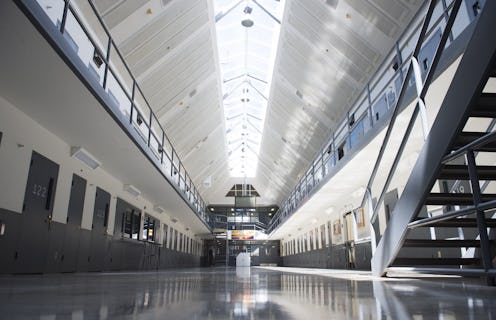News
Is Waiting For Execution Cruel And Unusual?
On Monday, a federal appeals court in California will hear a case on whether court delays for inmates on death row makes their punishment cruel and unusual. More California prisoners have died of natural causes while on death row than have been executed, as The Guardian reported. The unpredictable delays, combined with an unfair and arbitrary system of deciding when someone dies, could mean that the death penalty system — at least, in California — is violating prisoners' Eighth Amendment rights. Regardless, the number of people on death row nationally is high enough to indicate that delays for death row inmates in California might not be that unique.
The case came to fruition after U.S. District Court Judge Cormac Carney ruled against sentencing a convicted rapist and murderer in Los Angeles to the death penalty because he said it was dysfunctional and jammed up death row. Attorney General Kamala Harris appealed because of the particularly gruesome details of the crime in question.
Prosecutors are arguing that the state cannot be faulted for a poor system when all it wants is to protect the interests of the victim's family. This argument, though, disregards the rights of the accused. Regardless of the heinousness of a crime, convicts do not lose their rights — for example, their right to a punishment that is neither cruel nor unusual. The Ninth U.S. Circuit Court of Appeals will decide whether delays in prison constitute a violation of the Eighth Amendment.
More than 900 people have been sentenced to death in California since 1978, but only 13 have actually been executed in that time. Attorney Michael Laurence, who worked on the Los Angeles case, wrote that the death penalty cannot be considered a legitimate punishment for the state to pursue if it isn't working correctly:
As the district court concluded, the dysfunctional nature of California’s death penalty process has ceased to provide any semblance of a rational and constitutional punishment.
What makes California's case especially interesting is that it doesn't seem to be all that unique. There are currently 3,002 inmates on death row throughout the U.S., according to the Death Penalty Information Center (DPIC). In 2010, the U.S. Department of Justice found that inmates executed in 2010 had been awaiting execution for an average of 14 years and 10 months.
Most death row inmates are often isolated from other prisoners, restricted from prison engagement programs, and have more limited visitation and exercise programs. Those opposed to the death penalty say that this raises the question of whether death row inmates are receiving two punishments: the sentence of death, and the years they spend on death row. And depending on the state, death row can be a similar to solitary confinement.
Courts outside of the U.S. have mostly ruled that forcing an inmate to live for years under the imminent threat of execution is a type of torture. In 1989, the European Court of Human Rights ruled that long waiting periods on death row violated the European Convention of Human Rights, which bars torture or “inhuman or degrading treatment or punishment." Specifically, the court ruled that Britain could not deport a German man to Virginia to face capital punishment because he would have been forced to await his sentence for eight years, which was cruel because of "the anguish and mounting tension of living in the ever-present shadow of death."
Why are these delays happening at all? A huge 2000 article in The Columbia Law Review, called “The Overproduction of Death,” put it simply: The U.S. is sentencing more people to the death penalty than the system is prepared to handle, and then most of the sentences get thrown out later on.
The Ninth Circuit Court's ruling might not change laws across the country, but it could certainly draw more attention to the myriad problems with the death penalty in the U.S.
